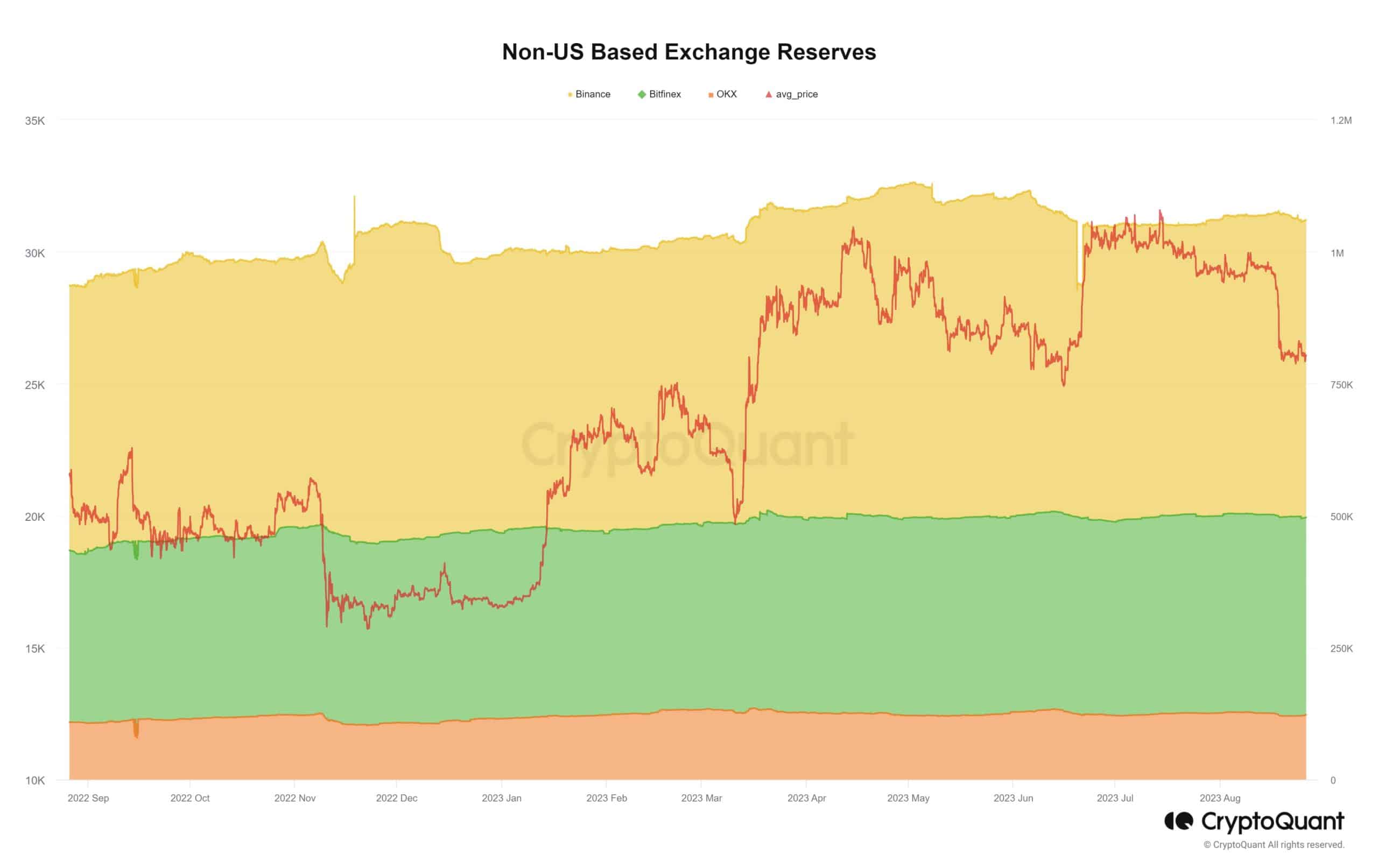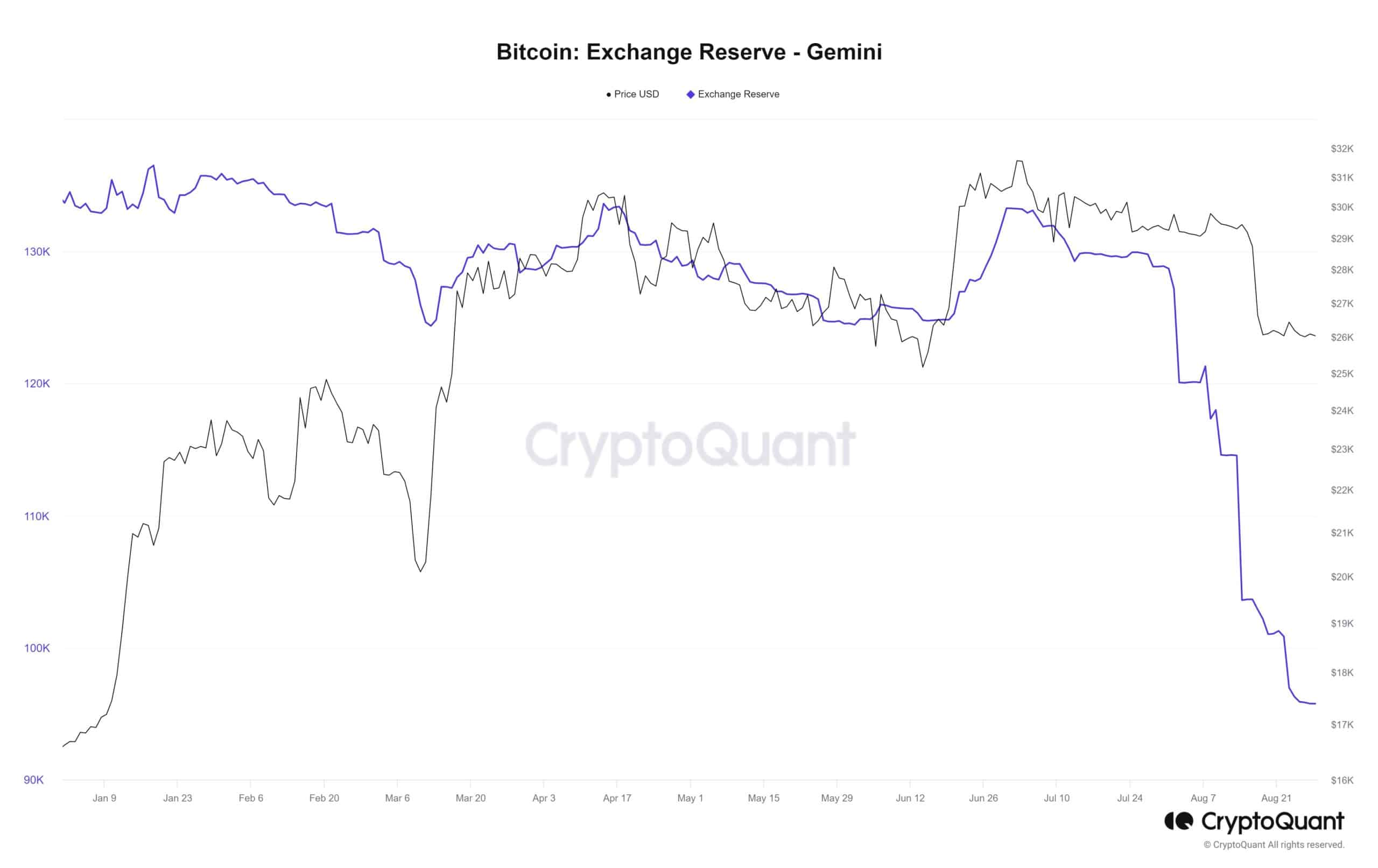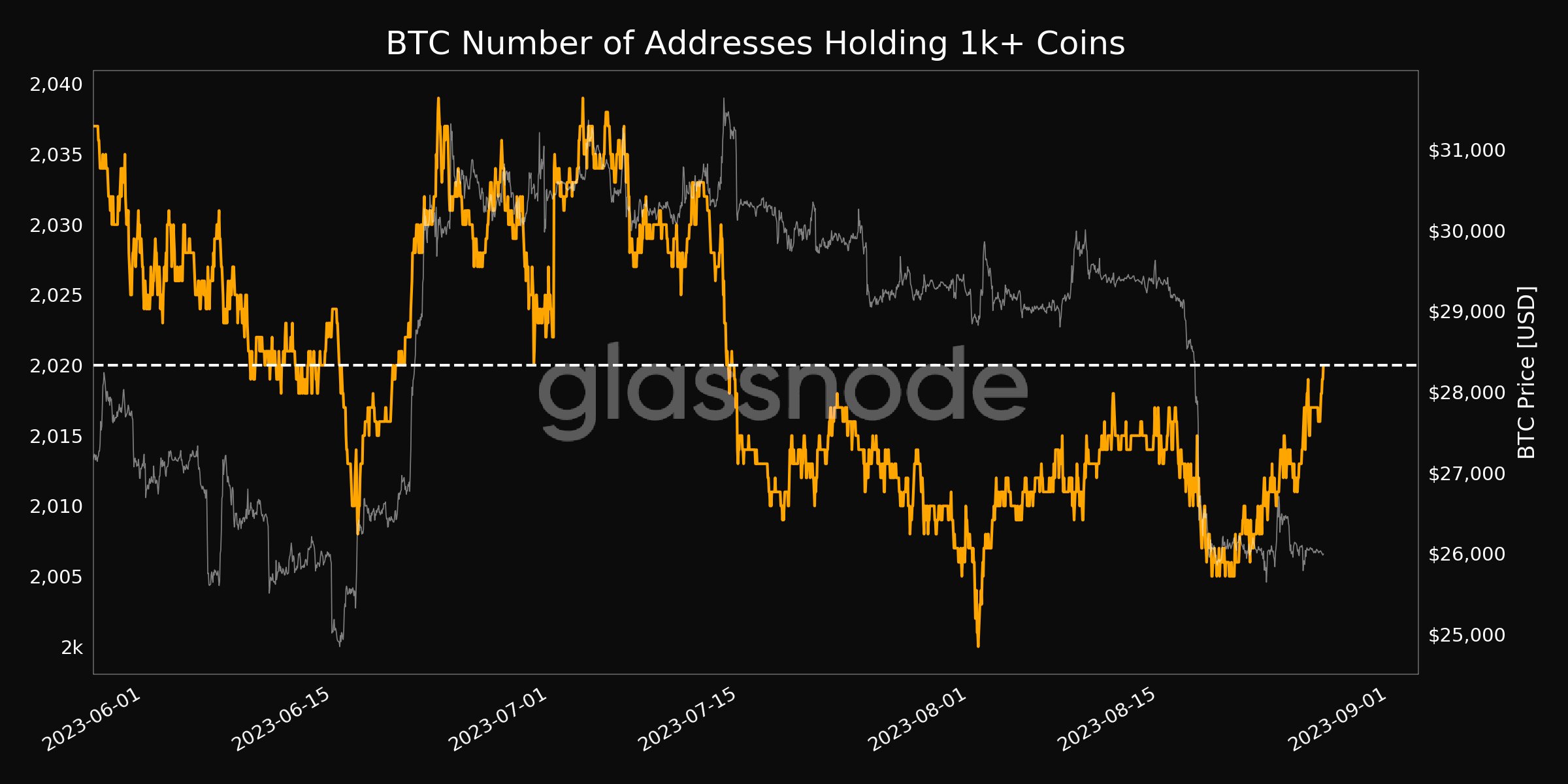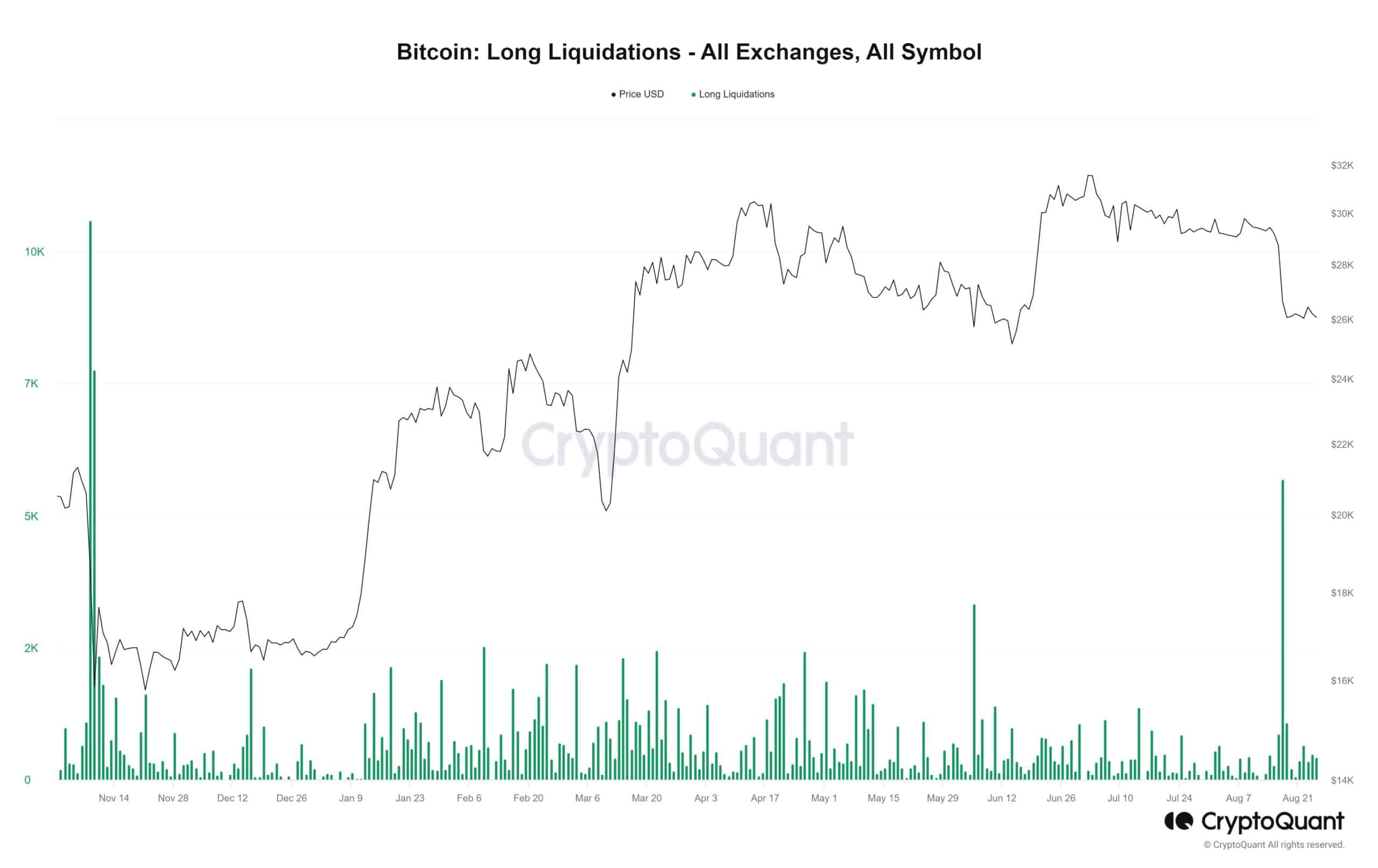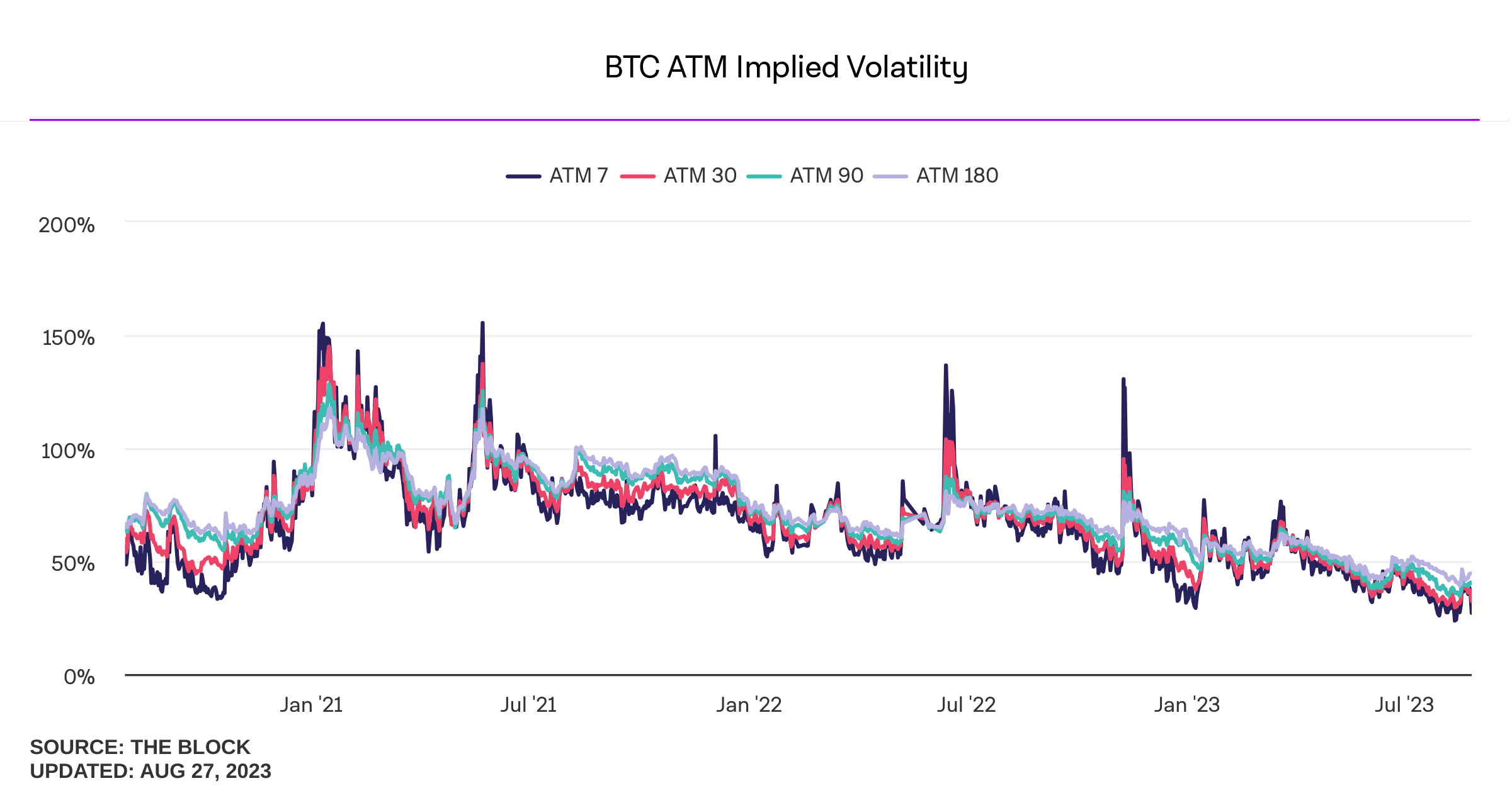- A significant trend has emerged in decentralized exchanges (CEXs) for BTC. Bitcoin reserves on non-US CEXs, including major platforms like Binance, OKX, and Bitfinex, experienced a significant increase of more than 10% during this temporary period.
- Reserves of BTC on US-based exchanges like Coinbase, Gemini, and Kraken experienced a significant decrease. This encompassed a wide range, from a 30% decrease to more serious drops of 50% or more.
- In the past few days, there has been an increase in the Implied Volatility indicator. An increase in Implied Volatility for Bitcoin indicates that the market expects larger price fluctuations in the near future.
Bitcoin price is going through a turbulent period, so what will the future hold for Bitcoin? Where does the price stand in relation to historical events?
How Did Bitcoin Perform Last Year?
In the midst of the recent turbulent waves experienced by Bitcoin, a comprehensive evaluation of the flagship cryptocurrency’s performance over the past year reveals its versatile journey.
According to CryptoQuant data, a significant trend has emerged in decentralized exchanges (CEXs) for BTC. Bitcoin reserves on non-US CEXs, including major platforms like Binance, OKX, and Bitfinex, experienced a significant increase of more than 10% during this temporary period.
In contrast, reserves of BTC on US-based exchanges like Coinbase, Gemini, and Kraken experienced a significant decrease. This encompassed a wide range, from a 30% decrease to more serious drops of 50% or more.
The fluctuation in exchange reserves has a dual effect, influencing Bitcoin’s supply dynamics and shaping overall market sentiment.
An interesting aspect of Bitcoin’s story is the continued accumulation of Bitcoin by institutional players. This was further evidenced by the analysis of deposit and withdrawal records, highlighting the ongoing desire of institutions to acquire Bitcoin.
A notable case occurred at Gemini, where a significant outflow of over 20,000 BTC was observed. According to CryptoQuant data, this represents approximately a quarter of their portfolio.
In further support of this trend, a significant 27,700 BTC was moved from the ‘3Fup’ address at Gemini, with these Bitcoin assets subsequently distributed to addresses such as ‘1QB’, ‘1Et’, and ’35g’.
At the time of writing, an interesting update came from Glassnode. Glassnode’s latest data showed an increase in the number of addresses holding 1,000 BTC or more. This was another indicator of increasing interest in Bitcoin among large whales.
The consequences of increasing institutional participation in the complex ups and downs of the Bitcoin price mechanism will become apparent as time progresses. While short-term whale interest can assist the short-term BTC price, it may also make retail investors more vulnerable in the future.
The interest from whales can also be associated with the recent hype surrounding Bitcoin ETF applications sent by large funds and institutions.
What is the State of the Futures Market?
Throughout last year, market participants showed increasing interest in derivative products, and Bitcoin’s Open Interest reached all-time highs since November 2022.
However, an important event occurred in August 2023 in the Bitcoin world. There was a significant drop in price due to many people selling a large portion of their holdings. This situation resembled a similar event that occurred after the FTX incident in November 2022.
In addition, there has been a slight decrease in the Put/Call ratio in the past few days, indicating an improvement in market sentiment. Despite the decrease in BTC price, the decreasing Put/Call ratio suggests increased bullish sentiment among investors.
Furthermore, there has been an increase in the Implied Volatility indicator in the past few days. An increase in Implied Volatility for Bitcoin indicates that the market expects larger price fluctuations in the near future. Traders are anticipating larger price fluctuations, reflecting increased uncertainty or potential future events that could affect the value of Bitcoin.
In this dynamic environment, there has been a noticeable downward trend in miner revenues. The rapid decline in miner revenues can increase selling pressure on miners and negatively impact the price of BTC.

